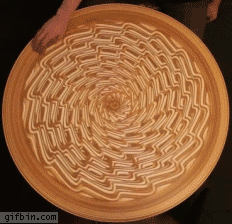Life Imitating Art Imitating Life
Chapter 4 Reflection
New Literacies: Everyday Practices and Social Learning
by Colin Lankshear & Michele Knobel
More than 17,000 years ago, humans painted murals in caves in southwestern France. Artists would venture their way through oxygen-deprived, dark cave passages to various locations and paint images of large animals, human figures, and abstract signs and symbols, taking their inspiration from life and the natural world. This is one of the very first examples of art imitating life, and the beginning of a complex relationship between people and art.
Flash forward to contemporary times, when everything has come full circle. We are now developing new technologies, practices, and ways of living as a result of the creative productions of humanity. Pop culture and Pop Art are perhaps the most obvious connection, but with the proliferation of the digital world we see an impact on what, how, and when we learn and communicate as a result. Our culture is changing as a result of the production, critique, and interaction with art and art objects. Producing and responding to art and art objects is a way of remixing life and art, art and life. Lankshear & Knobel suggest that remix is "a necessary condition for culture" and quote Lawrence Lessig to say that "every single act of reading and choosing and criticizing and praising culture is in this sense remix. And it is through this general practice that cultures get made." The process of remixing existing expressions is how younger generations are making meaning and expressing ideas.
Through this process of remixing, content and concepts begin to shift away from having single ownership and transcend to a place where art and ideas are a complex result of the expressions of the collective social mind. This creates a bit of a grey area when you attempt to make divisions between works that are "in-canon" and alternately "fan fiction". Lanshear & Knobel set the stage for an understanding of the different types of expressions, but pop culture columnist Matt Brown gives a few examples of the complexity of remixes and fan fiction in Destroy All Monsters: It's All Fan Fiction Now (even one where an author writes her own fan fiction!). Brown outlines a progressive perspective on how we view these types of practices and just how having these literacies can have a real impact on our lives.
"On one level, it's democratizing: just create, the fan fiction model tells us; and it no longer matters if you use your own set of rules or someone else's, because the best of your will eventually get called up to the majors anyway. When I was in film school, I used to make fun of people who spent their time and money making fan films instead of their own creative work. Now, I'm pretty sure one of those people will end up directing Episode 10."
Ultimately, the relationship goes both ways. Art imitates life, and life imitates art.

















